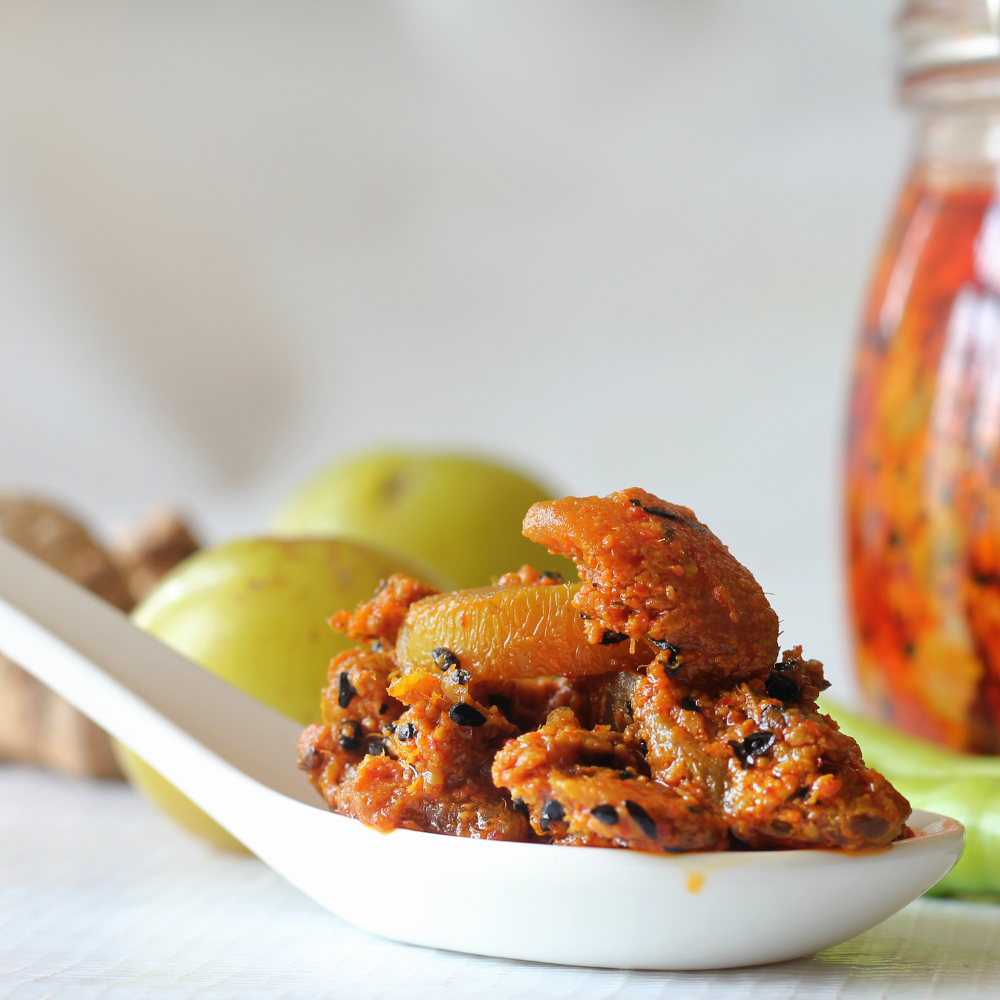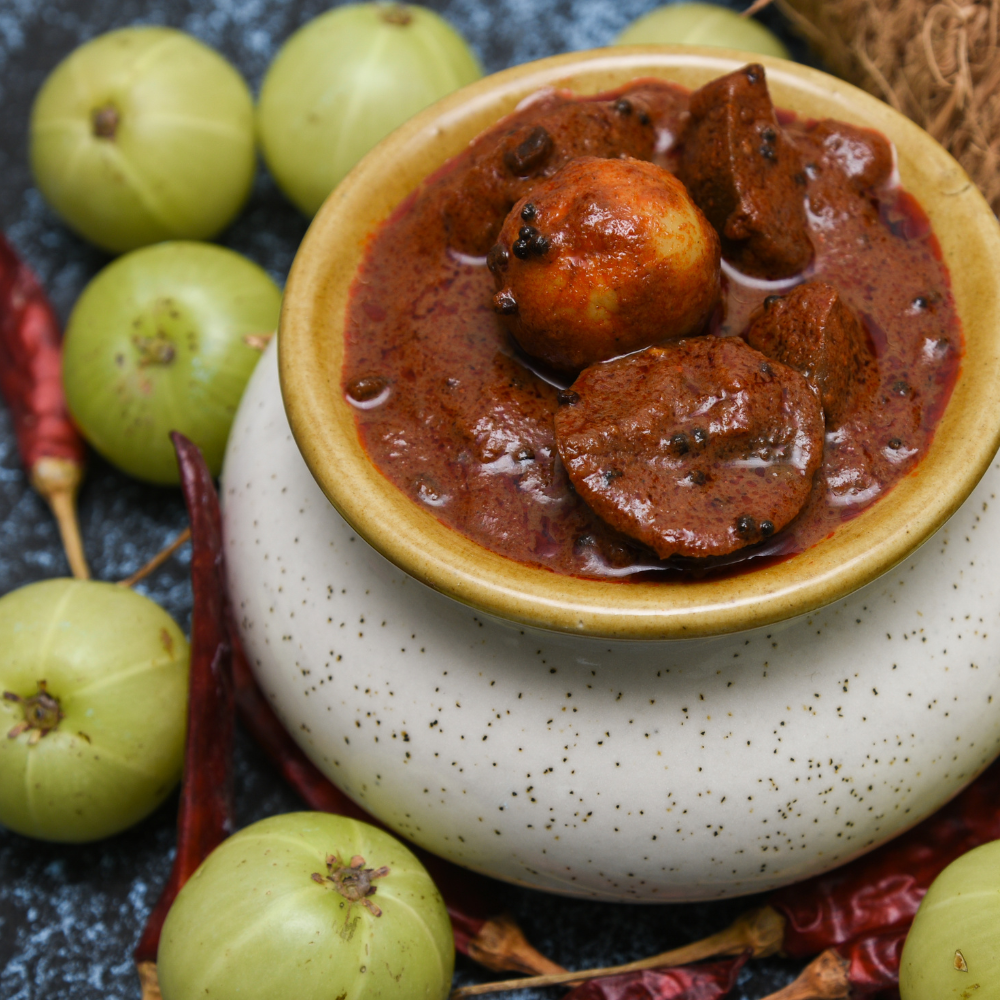Most of us are familiar with popcorn popping out of corn kernels.
But did you know there is an even better, protein-rich seed kernel that pops out?
It’s Makhanas!
Makhanas or phool makhana, also referred to as “phool” in Hindi; as they are obtained from the flowers or phool of a plant named Euryale ferox Salisb, commonly known as prickly waterlily, makhana or Gorgon plant. All of its parts have medicinal properties. Makhana is the edible seed kernel of this plant.
You must have experienced these light, fluffy, and white coloured small snacks over tea or even in some curries, including matar-makhana.
Makhanas have played a role in Indian cuisine for a long time. The reason is that they bring tons of nutrients and health benefits and add a crunch to our daily diet. They have been offered to deities on festivals and have been consumed as a main component on the fasting days of Navratri, Ekadashi, and more.
Makhanas have now attracted the world’s attention, and now you can see a variety of roasted makhanas sold in supermarkets under numerous FMCG brands.
An aware person makes conscious food choices. Let’s learn more about makhana - calories, nutrition, benefits, and the best ways to include it in your daily diet.
|
Table of Contents
|
What Are Makhanas?
Makhana, also referred to as fox nuts or lotus seeds, is a type of aquatic plant seed harvested primarily from the lotus flower. Native to Asian countries, especially India, it has a prominent place in traditional cuisine and Ayurvedic medicine.
Makhana seeds are small, round, and ivory-coloured, with a pleasingly crunchy texture when roasted or popped. The roasted makhana nutrition value is essential for making informed dietary choices. Makhana's versatility shines as it's used in diverse culinary applications. In Indian cuisine, makhanas are enjoyed in both sweet and savoury dishes, including curries, snacks, and desserts. Its mild flavour allows it to absorb various spices and seasonings, making it a versatile ingredient
Let’s take a look at the nutritional properties of makhanas.
Nutrition per 100gm of Makhana
Makhana is highly recommended by nutritionists and fitness enthusiasts as a healthy source of protein, complex carbohydrates, and fats.
Did you know that roasting increases the levels of makhana nutrients?
Check out the nutrition per 100gm of popped makhana and roasted makhana below and see the difference.
|
Nutrients |
Popped Seeds or Raw Makhana |
Roasted seeds Makhana |
|
Fat (% by wt.) |
0.5 |
0.68 |
|
Protein (% by wt.) |
8.7 |
14.57 |
|
Carbohydrates (% by wt.) |
79.8 |
79.4 |
|
Phosphorous (mg/100g) |
53.2 |
56.4 |
|
Potassium (mg/100g) |
42.0 |
47.2 |
|
Iron (mg/100g) |
1.4 |
12.7 |
|
Calcium (mg/100g) |
18.5 |
19.2 |
|
Magnesium (mg/100g) |
13.9 |
26.3 |
|
Sodium (mg/100g) |
71.0 |
23.8 |
|
Copper (mg/100g) |
0.5 |
- |
|
Manganese (mg/100g) |
1.3 |
- |
|
Zinc (mg/100g) |
1.1 |
1.8 |
Source: A Comprehensive Review on Nutraceutical Properties of Euryale ferox Salisb
The protein in makhana or makhana protein is the source of all the essential amino acids (leucine, isoleucine, methionine, and lysine) and the non-essential amino acids (arginine, cysteine, and glutamine).
The carbohydrates found in makhana contain resistant starches. Resistant starches digest slowly, just like their dietary fibres, and help in regulating glucose levels.
If you are thinking that makhana is full of nutrients and must be high in calories, you are wrong! See for yourself.
Calories in Makhana
- 100 grams of makhana have 356 kcal
- 100 grams of roasted makhana have 348 kcal
- 1 cup of makhana provides 178 kcal
- 1 cup of roasted makhana provides 216 kcal
Now, you can include makhana as per your daily calorie requirements. The low-calorie value of makhana makes it an ideal food for weight management and diabetes.
There are several other health benefits of makhana; let’s learn about them.
7 Amazing Benefits of Consuming Makhana
Makhana has been known for its health properties globally. Interestingly, all of the parts of the Euryale ferox Salisb or makhana plant have several medicinal uses. It’s time to explore the various health properties shared by this beautiful dry fruit with us.
1. Makhana Has Antioxidant Properties
Makhana is rich in antioxidants. It is known that a good dose of antioxidants on a regular basis reduces the chances of oxidative stress-related diseases like cancer, diabetes, and cardiovascular diseases.
2. Makhana Improves Antimicrobial And Antifungal Activity
Makhana has antimicrobial and anti-fungal properties. Research has found makhana effective in eliminating the common bacteria and fungi- Staphylococcus aureus, Escherichia coli, Candida albicans, and Penicillium notatum. Consuming makhana can save you from regular, mild infections.
3. Makhana Helps Control Diabetes
Makhana has antidiabetic activity because of the complex carbs, dietary fibres, and antioxidants present in it. Many traditional and ethnomedicinal practices use it as a source of natural antioxidants in the treatment of diabetic nephropathy.
The antioxidant in makhana inhibits proteinuria (high levels of protein in urine), which may indicate diabetes. The polysaccharides (carbohydrates) in makhana increase the glucose consumption by the insulin-resistant cells, thereby decreasing blood glucose levels.
4. Makhana Has Stress-Relieving Properties
Makhana is an abundant source of polyphenols. Polyphenols are well known for their anti-fatigue activity. The antioxidant activity of polyphenols is similar to their anti-fatigue property.
Thus, consuming makhana has significant anti-fatigue effects.
5. Makhana Also Has Anti-Cancer Properties
Studies have found that makhana has anti-cancer or anti-melanogenesis activity. Makhana reduces the synthesis of melanogenesis-related proteins that cause cancer or abnormal cell growth.
6. Makhana Is Also Known For Its Antidepressant Properties
Depression is associated with a decline in autophagy - the removal of damaged cells, organelles, or proteins from the blood. Makhana increases this activity, helps maintain healthy cells, and provides relief in conditions like stress and depression.
7. Makhana Is Also Good For Heart And Liver Health
Makhana has been used in the treatment of hypertension and cardiovascular-related diseases. Makhana increases the proteins involved in cardioprotection (thioredoxin-1(Trx-1) and thioredoxin-related protein-32 (TRP32)) and keeps the heart healthy.
Makhana also has hepato-protective activities known to decrease non-alcoholic fatty liver disease (NAFLD) caused by a high-fat diet.
Learning about the health benefits of makhana will be of no use if you can include it in your diet regularly. Let’s see how you can consume makhana to gain all its health benefits.
Three Best Ways to Consume Makhana
Makhanas are easiest to consume and to be included in any dish. Their neutral taste makes them invisible in any recipe, from vegetable pulao to breads and veggies. Here are 3 simple and delicious ways to consume makhana food.
1. Spiced Roasted Makhana

Spiced makhana is loved by all. The makhanas are roasted in ghee and spices to form a crunchy snack perfect to accompany your morning or evening tea/coffee or any beverage.
Spiced Chatpata Makhana by TBOF is a delicious makhana snack with an amazing flavour profile you need to try now.
If you are looking for something sweet during your snack break, try out Palm Jaggery Crunchy Caramel Makhana. Surely, your tastebuds will be delighted.
Add a healthy yet tasty snack to your tea-time with these options.
2. Makhana Smoothies or Shakes
Makhana smoothies or shakes take a few minutes to prepare. All you need is:
- A handful of makhana
- Curd or milk,
- A fruit of your choice (apple, banana, mango, kiwi, etc.)
- Sprouted ragi sattva or oats
- Jaggery or dates
- Seeds (pumpkin, sunflower, chia)
Mix everything in a blender until smooth, and serve it.
Makhana smoothie is a great after-workout drink and breakfast. You can avoid adding ragi and oats to have it on the day of the fast and be full of energy all day.
3. Makhana Kheer or Pudding

Makhana kheer, or pudding, is one of the healthiest, low-calorie desserts you can prepare at home. It takes only a few ingredients: milk, roasted makhana, green cardamoms, and jaggery or dates.
Here’s how to make makhana kheer.
- Just take some roasted makhanas and grind them in a blender.
- Boil two cups of milk and add the grounded makhana to it.
- Add 2 or 3 pods of crushed green cardamoms, and let the mixture boil till it reaches a creamy consistency.
- Take it off the flame and leave it to cool down.
- Add jaggery or date syrup as per taste and mix well.
Makhana kheer, or pudding, is ready. Serve it chilled or at room temperature.
FAQs: Makhana - Calories, Nutrition, Benefits, Protein Value, Everything You Need to Know
Is makhana good to consume during your periods?
Yes, makhana is good for when you're on your period. The nutrient composition of makhana helps to control the acidic conditions of the body. These can include gastritis, heavy menstrual cycles, bleeding disorders, and nasal bleeds.
Is makhana good for digestion?
Makhana has an ample amount of dietary fibres that support probiotic conditions in the gut and regulate bowel movements. The antioxidants in makhana help overcome constipation and indigestion and reduce blood sugar levels. That’s why makhana is a great addition to your diet for good digestion.
What are the makhana benefits for females?
Makhana benefits females by providing antioxidants for skin health, aiding digestion, regulating hormones, and supporting bone health, among other benefits of makhana with milk.
When is the best time to eat makhana for weight loss?
Makhana can be consumed as a healthy snack between meals or as part of a balanced diet for weight loss. Eating makhana between meals can help control hunger pangs, and its low-calorie content makes it a suitable option for weight management.
What are the makhana benefits?
Makhana offers several health benefits, including being a rich source of protein, fiber, and antioxidants. It can aid in weight management, promote digestive health, regulate blood sugar levels, and support bone health.
What is the nutritional value of makhana per 100g?
Makhana nutrition, per 100g, typically contains around 356 kcal, 8.7 grams of protein, 79.8 grams of carbohydrates, and 0.5 grams of fat. It is also a good source of various vitamins and minerals such as calcium, magnesium, phosphorus, and potassium.
What are the lotus seeds benefits?
Lotus seeds, or makhana, are packed with nutrients such as protein, fiber, vitamins, and minerals. They provide sustained energy, aid in muscle building and repair, promote satiety, and contribute to overall health and well-being.
Are salted makhana healthy?
While salted makhana can be a tasty snack, it's essential to consume them in moderation due to the added salt content. Excessive salt intake may lead to health issues such as high blood pressure. Opting for unsalted or lightly salted varieties may be a healthier choice.
Conclusion
Makhanas are easy to carry, light in weight and a perfect snack for the day or night. Now you know everything about– “Makhana- Calories, Nutrition, Benefits, Protein Value and more”.
Adding makhana to your diet regularly will bring significant healthy changes to your metabolism and up your fitness game. They are ideal for all age groups and are diabetic and heart-friendly. Consume them spiced, in your smoothie, or as a dessert; it's up to you.
If you are looking for a ready-to-eat, healthy, organic, and preservative-free spice makhana, check out Two Brothers Organic Farms Spice Makhana.
Try the Palm Jaggery Crunchy Caramel Makhana for your sweet tooth and the Spiced Chatpata Makhana for your savoury cravings, and take a step towards a healthy lifestyle.
Read More :
10 High-Fiber And Protein Snacks - Be Health Conscious And Eat Deliciously











